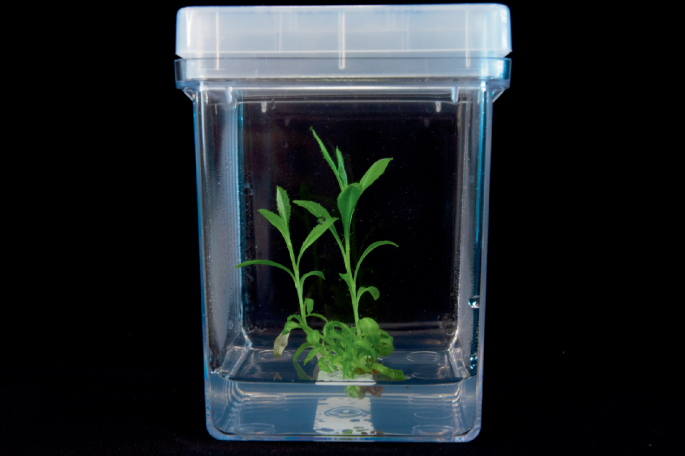- News
- Published:
Biomining
volume 43, page 462 (2025)Cite this article
Some plants from the family Asteraceae, which includes daisies, belong to an unusual group known as hyperaccumulators. These species soak up metals from their roots and store them at exceptionally high concentrations in their tissues, a capacity that probably evolved as a defense mechanism against herbivores and pathogens. Of the 750 known hyperaccumulator species, most can thrive in fields with otherwise toxic levels of copper, cobalt, lithium, nickel and rare earth elements. The plants store the metals in vacuoles in the leaf cells. To ramp up their phytomining capacity, GenoMines boosted the plant’s height and the size of its leaves. The biotech also developed a targeted soil microbiome to enhance nickel absorption.
The GenoMines team grows the hyperaccumulator plants in nickel-rich fields and harvests them after six months. The company then recovers the metal from the biomass by a combination of techniques that include bioleaching, extracting up to 2.5 tonnes of nickel per hectare per year. Not only does this process yield nickel, but by extracting the metal, the plants also remediate the land.
This is a preview of subscription content, access via your institution
Access options
Access Nature and 54 other Nature Portfolio journals
Get Nature+, our best-value online-access subscription
24,99 € / 30 days
cancel any time
Subscribe to this journal
Receive 12 print issues and online access
195,33 € per year
only 16,28 € per issue
Buy this article
- Purchase on SpringerLink
- Instant access to full article PDF
Prices may be subject to local taxes which are calculated during checkout
Rights and permissions
About this article
Cite this article
Turrell, C. Wildflowers soak up nickel from toxic soil.
Nat Biotechnol 43, 462 (2025). https://doi.org/10.1038/s41587-025-02647-3
-
Published:
-
Issue Date:
-
DOI: https://doi.org/10.1038/s41587-025-02647-3
























